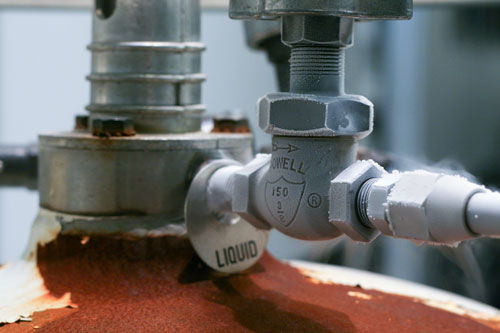posted by Dave Arnold
You asked for it, you got it. A liquid nitrogen primer.

Nils and I wrote an article on freezing for the September 2009 issue of Food Arts Magazine. The piece included a short section on liquid nitrogen (LN or LN2), and I have greatly expanded it here for the blog. Important: we make no claims to inventing any of the techniques presented here. They are all pretty standard. Please, discuss who-came-up-with-what-first somewhere else. This is simply a primer.
The sections are:
I. Introduction:
II. Safety (important stuff):
III. Getting and Storing LN:
IV. Some Applications (cool stuff, most of the pictures):
I’ll just give you the Introduction below.
Liquid Nitrogen is about as cold as you can get in the kitchen, registering a whopping negative 196 degrees Celsius (-321 F) … and it’s non-diluting and non-contaminating to boot. Despite its preposterous coldness, liquid nitrogen has only 15% more cooling power than the same amount of ice at 0 Celsius. This counter-intuitive fact leads many chefs to underestimate the amount of liquid nitrogen they need for a given task, like making ice cream.
Ice cream is typically the first thing people make with LN. Theoretically, it should be the best you can make because the mix freezes so quickly – and the quicker the freeze, the smaller the ice crystals, and the smoother the ice cream. But commercial ice cream machines make sufficiently small ice crystals for most palates, and it’s very easy to over-freeze portions of liquid nitrogen ice cream. So your LN ice cream results might not be as great as you expect.
But there are many other fantastic LN applications. You can turn fresh herbs into powder, separate citrus fruits and raspberries into jewel-like pieces, and freeze alcohol to make liquid centered treats. Be warned: liquid nitrogen is addictive and mesmerizing in the kitchen.
Here is a taste of some of the techniques in the primer:


How much do they cost?
Howdy Sheridan,
How much does what cost?